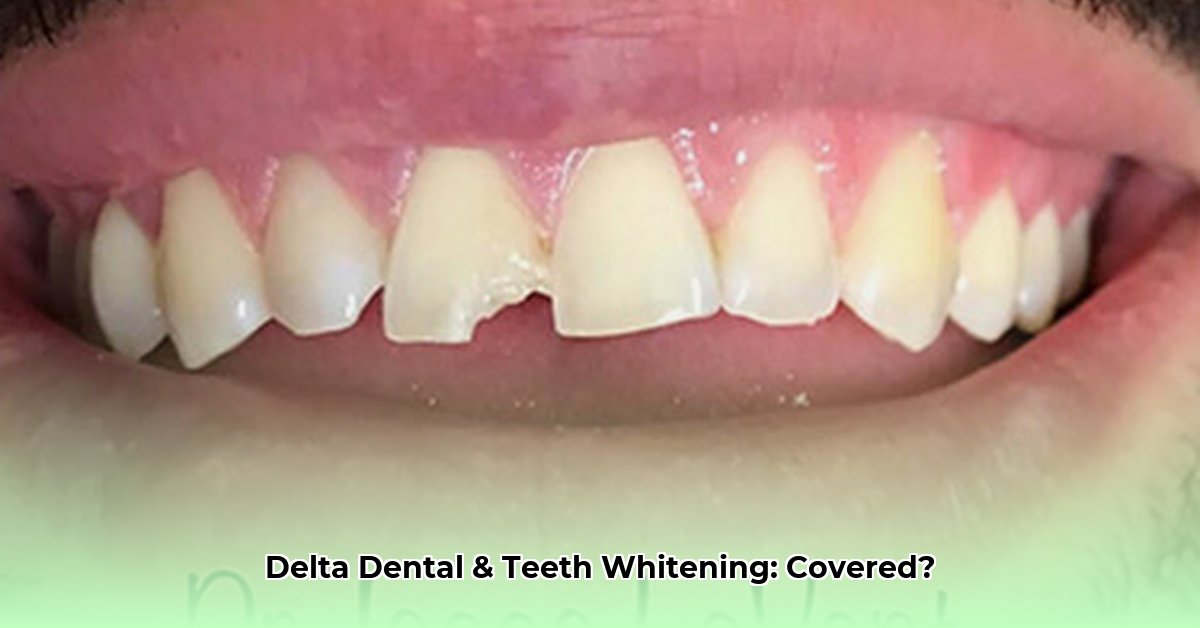
Dreaming of a brighter smile but concerned about the cost? Teeth whitening is increasingly popular, but the expense can be significant. This article clarifies Delta Dental's coverage (and that of other providers) and guides you through the various teeth-whitening options available, helping you make an informed decision. We'll explore different whitening methods, their effectiveness, associated costs, and provide a step-by-step process for choosing the best approach for your needs and budget. For information on other insurance coverage, check out this helpful resource: insurance coverage.
Exploring Your Teeth Whitening Choices
Several methods exist for brightening your smile, each with its own advantages, disadvantages, and price point.
In-Office Whitening
This provides the quickest and most dramatic results. Professional in-office whitening typically costs $600 or more, offering a fast track to a noticeably whiter smile, but at a premium price.
At-Home Custom Trays
Your dentist creates personalized trays that fit your teeth perfectly. You apply bleaching gel at home. This offers a balance between speed and affordability, usually costing around $243 or more per arch, providing good results with more control over the process.
Whitening Strips
Convenient and relatively inexpensive, these thin strips adhere to your teeth for a set time. While results are less dramatic and take longer, they offer a budget-friendly entry point to teeth whitening.
Whitening Toothpaste and Pens
These primarily address surface stains, offering minimal whitening effects. They're cheap and readily available but won't dramatically change your smile's shade.
DIY Methods – Proceed with Caution!
Numerous DIY methods exist, but caution is crucial. Many lack the safety and quality control of professional products, potentially harming your gums, teeth, or oral health. Consult your dentist before trying any DIY whitening method. Is a DIY approach really worth the risk to your oral health?
Assessing the Risks: A Reality Check
Teeth whitening, while desirable, carries potential risks. The following table outlines the relative risks associated with each method:
| Whitening Method | Gum Irritation Risk | Tooth Sensitivity Risk | Ineffective Whitening Risk | Cost Risk |
|---|---|---|---|---|
| In-Office Whitening | Low | Medium | Low | Very High |
| Custom Trays | Low | Medium | Low-Medium | Medium |
| Whitening Strips | Low | Low-Medium | Medium-High | Low |
| Whitening Toothpaste/Pens | Very Low | Very Low | Very High | Very Low |
| DIY Methods | High | High | Very High | Low (initially) |
Important Note: This table shows potential risks; individual experiences vary. Always consult your dentist.
Delta Dental and Teeth Whitening Coverage: The Fine Print
Delta Dental, like most dental insurance providers, generally does not cover teeth whitening. It's usually considered a cosmetic procedure, not medically necessary. While exceptions may exist, coverage is not standard. Always check your specific Delta Dental policy or contact them directly for the most accurate information. Don't assume coverage; verify it! What percentage of Delta Dental plans actually cover teeth whitening?
Other Insurance Providers: A Wider Look
Most dental insurance providers follow a similar approach to teeth whitening coverage. They tend to classify it as a cosmetic procedure and therefore don't offer substantial coverage. However, always contact your insurer directly to verify their current policy.
Factors Affecting Results and Costs
Several factors influence the effectiveness and cost of teeth whitening:
- Stain Severity: Surface stains are easier to remove than deep stains. Deep stains may require more extensive—and expensive—treatments.
- Tooth Type: Whitening may not be as effective on crowns, veneers, or fillings.
- Lifestyle: Smoking and consuming staining substances like coffee and red wine impact results.
Choosing the Right Method: Your Personalized Plan
- Consult Your Dentist: This is paramount. They assess your oral health, discuss your goals, and recommend the safest, most effective approach.
- Set Your Budget: In-office whitening is the most expensive. Determine what you can comfortably afford.
- Time Commitment: Do you want quick results or a more gradual process?
- Stain Assessment: Minor surface stains may require less-expensive options; deep stains need more intensive treatment.
Maintaining Your Radiant Smile: Long-Term Care
Maintain your results by brushing twice daily with whitening toothpaste, limiting staining foods and drinks, and scheduling regular dental check-ups. How can you prolong the effects of your professional teeth whitening?
Final Thoughts: A Word of Caution
Always consult a dentist before starting any whitening treatment. They assess your teeth, advise on the best approach, and answer questions about teeth whitening and insurance coverage. Prioritize your oral health; make informed decisions!
Resources
- Delta Dental Website
- American Dental Association (ADA) Website